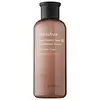What's inside
What's inside
 Key Ingredients
Key Ingredients

 Benefits
Benefits

 Concerns
Concerns

 Ingredients Side-by-side
Ingredients Side-by-side

Water
Skin ConditioningAlcohol Denat.
AntimicrobialButylene Glycol
HumectantGlycerin
HumectantPropanediol
Solvent1,2-Hexanediol
Skin ConditioningBetaine
HumectantGinkgo Biloba Leaf Extract
Skin ConditioningEthylhexylglycerin
Skin ConditioningMentha Arvensis Leaf Extract
MaskingAlcohol
AntimicrobialVaccinium Myrtillus Fruit Extract
Skin ConditioningDisodium EDTA
Saccharum Officinarum Extract
MoisturisingSodium Hyaluronate
HumectantCitrus Aurantium Dulcis Fruit Extract
MaskingCitrus Limon Fruit Extract
MaskingVinegar
Acer Saccharum Extract
Skin ConditioningTocopherol
AntioxidantWater, Alcohol Denat., Butylene Glycol, Glycerin, Propanediol, 1,2-Hexanediol, Betaine, Ginkgo Biloba Leaf Extract, Ethylhexylglycerin, Mentha Arvensis Leaf Extract, Alcohol, Vaccinium Myrtillus Fruit Extract, Disodium EDTA, Saccharum Officinarum Extract, Sodium Hyaluronate, Citrus Aurantium Dulcis Fruit Extract, Citrus Limon Fruit Extract, Vinegar, Acer Saccharum Extract, Tocopherol
Water
Skin ConditioningPropanediol
SolventAlcohol
Antimicrobial1,2-Hexanediol
Skin ConditioningSilica
AbrasivePPG-13-Decyltetradeceth-24
EmulsifyingLithium Magnesium Sodium Silicate
AbsorbentSodium Citrate
BufferingCitric Acid
BufferingGlyceryl Caprylate
EmollientParfum
MaskingCalcium Chloride
AstringentEthylhexylglycerin
Skin ConditioningDisodium EDTA
Colloidal Sulfur
AntimicrobialVolcanic Ash
AbrasiveCI 77891
Cosmetic ColorantLactic Acid/Glycolic Acid Copolymer
Skin ConditioningAluminum Hydroxide
EmollientTriethoxycaprylylsilane
Tocopherol
AntioxidantWater, Propanediol, Alcohol, 1,2-Hexanediol, Silica, PPG-13-Decyltetradeceth-24, Lithium Magnesium Sodium Silicate, Sodium Citrate, Citric Acid, Glyceryl Caprylate, Parfum, Calcium Chloride, Ethylhexylglycerin, Disodium EDTA, Colloidal Sulfur, Volcanic Ash, CI 77891, Lactic Acid/Glycolic Acid Copolymer, Aluminum Hydroxide, Triethoxycaprylylsilane, Tocopherol
Ingredients Explained
These ingredients are found in both products.
Ingredients higher up in an ingredient list are typically present in a larger amount.
1,2-Hexanediol is a synthetic liquid and another multi-functional powerhouse.
It is a:
- Humectant, drawing moisture into the skin
- Emollient, helping to soften skin
- Solvent, dispersing and stabilizing formulas
- Preservative booster, enhancing the antimicrobial activity of other preservatives
Alcohol comes in many different forms. Different types of alcohol will have different effects on skin. This ingredient is usually an astringent alcohol.
These alcohols are drying on the skin. They may strip away your skin's natural oils and even damage your skin barrier. Astringent alcohols may also irritate skin.
Other types of astringent alcohols include:
According to the National Rosacea Society based in the US, you should be mindful of products with these alcohols in the top half of ingredients.
Any type of sanitizing product will have high amounts of alcohol to help kill bacteria and viruses.
Fatty alcohols come from plant oils such as coconut oil. These can help hydrate the skin and are non-irritating. Some fatty alcohols include cetyl and stearyl alcohol.
Learn more about AlcoholDisodium EDTA plays a role in making products more stable by aiding other preservatives.
It is a chelating agent, meaning it neutralizes metal ions that may be found in a product.
Disodium EDTA is a salt of edetic acid and is found to be safe in cosmetic ingredients.
Learn more about Disodium EDTAEthylhexylglycerin (we can't pronounce this either) is commonly used as a preservative and skin softener. It is derived from glyceryl.
You might see Ethylhexylglycerin often paired with other preservatives such as phenoxyethanol. Ethylhexylglycerin has been found to increase the effectiveness of these other preservatives.
Propanediol is an all-star ingredient. It softens, hydrates, and smooths the skin.
It’s often used to:
Propanediol is not likely to cause sensitivity and considered safe to use. It is derived from corn or petroleum with a clear color and no scent.
Learn more about PropanediolTocopherol (also known as Vitamin E) is a common antioxidant used to help protect the skin from free-radicals and strengthen the skin barrier. It's also fat soluble - this means our skin is great at absorbing it.
Vitamin E also helps keep your natural skin lipids healthy. Your lipid skin barrier naturally consists of lipids, ceramides, and fatty acids. Vitamin E offers extra protection for your skin’s lipid barrier, keeping your skin healthy and nourished.
Another benefit is a bit of UV protection. Vitamin E helps reduce the damage caused by UVB rays. (It should not replace your sunscreen). Combining it with Vitamin C can decrease sunburned cells and hyperpigmentation after UV exposure.
You might have noticed Vitamin E + C often paired together. This is because it is great at stabilizing Vitamin C. Using the two together helps increase the effectiveness of both ingredients.
There are often claims that Vitamin E can reduce/prevent scarring, but these claims haven't been confirmed by scientific research.
Learn more about TocopherolWater. It's the most common cosmetic ingredient of all. You'll usually see it at the top of ingredient lists, meaning that it makes up the largest part of the product.
So why is it so popular? Water most often acts as a solvent - this means that it helps dissolve other ingredients into the formulation.
You'll also recognize water as that liquid we all need to stay alive. If you see this, drink a glass of water. Stay hydrated!
Learn more about Water